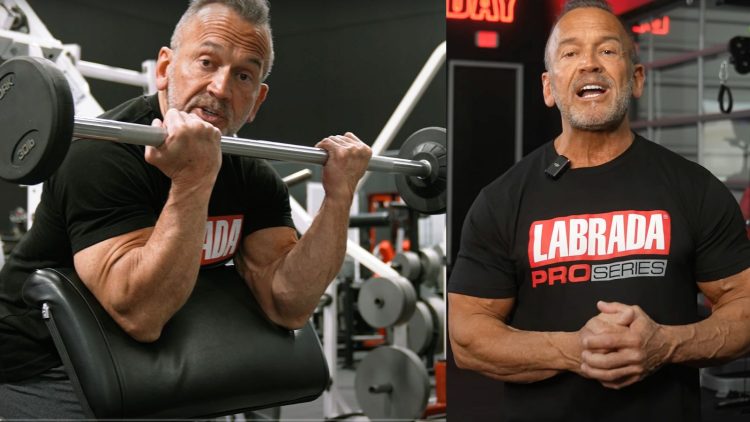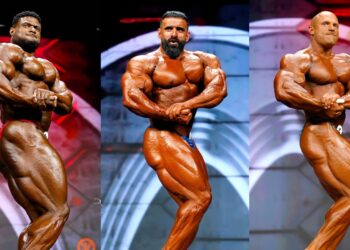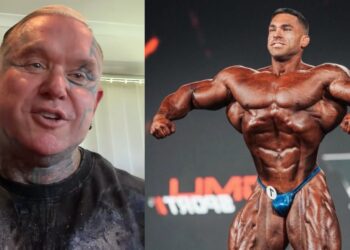Lee Labrada‘s experience in bodybuilding and knowledge of exercise mechanics has turned him into one of the most respected voices in fitness. In a recent YouTube video, Labrada offered his rules of thumb for optimizing training frequency and duration to maximize muscle gains.
“How long and how often should I train… this is one of the most commonly asked questions that I’ve gotten over my career and it’s also one of the most important,” says Lee Labrada.
Just like bodybuilding legend Frank Zane, Lee Labrada routinely tested himself against opponents who outweighed him by as much as 50 pounds. Having battled against eight-time Mr. Olympia Lee Haney, Rich Gaspari, and Samir Bannout, Labrada utilized every resource at his disposal to emerge as one of the most memorable IFBB Pro talents in the league.
In retirement, Lee Labrada is the picture of longevity, and fortunately, shares his tricks of the trade with fans and competitors alike. From avoiding disastrous muscle tears to burning off unwanted belly fat, the bodybuilding veteran continues to give back since stepping away from the stage.
View this post on InstagramGet Fitter, FasterLevel Up Your Fitness: Join our 💪 strong community in Fitness Volt Newsletter. Get daily inspiration, expert-backed workouts, nutrition tips, the latest in strength sports, and the support you need to reach your goals. Subscribe for free!
Overtraining can affect the best of us, and that includes Lee Labrada. Using years of experience in the field, he breaks down how to leverage duration and frequency to maximize muscle gains while avoiding burnout. Below, he explains how he approaches training every day to ensure a top-quality physique at 63 years old.
Lee Labrada Shares His ‘Rules of Thumb’ for Optimizing Training Frequency and Duration
Labrada emphasizes that muscle growth doesn’t occur in the gym but is an ‘adaptive response’ that takes place over the next few days after training.
“We use resistance training with free weight or exercise machines to create a stimulus. A stimulus which signals our body to answer with an adaptive response. In our case, the desired response is muscle growth. So, the equation looks like this, resistance on the muscle gives a stimulus and your body responds with muscle growth.”
“Our muscles don’t actually grow in the gym. Muscle growth is the adaptive response that happens over the next few days after training as we eat and rest. Muscle growth is best stimulated by short duration high intensity training. We can either train long or we can train hard intensely, but we cannot do both,” Lee Labrada shared.
He underlines that maintaining intensity and avoiding overstimulation is key to muscle-building.
“During our workouts, we want to strike a balance. You need to train with enough intensity to create a stimulus that causes your muscles to grow but you can’t overstimulate muscles because this results in overtraining which means slow growth or no growth.”
Labrada credits proper recovery as the linchpin to ensuring gains, which includes sleep quality.
“We need to recover from the stress of training in terms of our metabolism which is energy replenishment. Our muscle cells and our connective tissues or tendons. We have to balance both the stress of training and life with our capacity with the body to replenish, recharge, and grow.”
“Getting enough sleep is quite possibly the most anabolic or growth-supporting thing you can do. If you’re really serious about maximizing results, eight to 10 hours of sleep per day which can also include a nap, a nap can be part of that, is best. Sleeping six to eight hours a day can be okay sometimes, but may not be the optimal amount depending on the outside demands and stressors of your life.”
Adequate nutrition and supplementation also play a significant role in avoiding overtraining.
“Proteins and carbohydrates, and fat ratios, meal timing, and even supplements,” adds Labrada. “You need about one gram of quality protein per pound of lean body mass if you’re training hard along with enough carbs and healthy fats for fuel.”
As for frequency and duration tips, Labrada shared that he typically exercised four times a week but completed his workouts with moderate intensity.
“Here’s some rules of thumb for optimizing training frequency and duration. Initially, you should experiment with training three to four times per week before you consider jumping to a five-day per-week program.”
“The majority of the time I trained four days per week but keep in mind, those workouts were intense. My typical training days were Monday, Tuesday, rest on Wednesday, then Thursday, then, Friday, then take the weekends off. I got great results with this program.”
Generally, he believes 45-minute sessions are something to shoot for, adding that ‘short workouts’ and ‘high intensity’ are the tickets to success.
“Starting out, keeping training sessions in the 45-minute range give or take, that is very very helpful. Again, short workouts, high intensity is the ticket.
That means fewer sets with shorter rest periods but those sets are all-out. Be sure to warm up sufficiently before starting and rest between sets should be no more than about a minute or however long for you to catch your breath.”
Lastly, Labrada underlined the importance of a proper split, like his push-pull variant.
“You should group complimentary body parts together. You can vary these groupings in various ways but I did very well with what is called a push-pull split. A push-pull split, you’ll train the push muscles which are the chest, shoulders, and triceps in one workout, and back, biceps, and legs on another day.”
“Experiment with other splits and watch the results, see how you feel, and train accordingly.”
Even though muscle growth is always at the top of his priority list, Lee Labrada favors technique safety. He recently offered his guide on building muscle safely with ‘continuous tension.’ From routines designed for those over 60 to safer alternatives for the deadlift, Labrada is committed to fitness and his passion for building muscle.
Considering how often overtraining rears its head for athletes, Lee Labrada’s guide will surely provide the foundation for better exercise practices. He stands by simple yet effective training principles for achieving muscle growth.
RELATED: Lee Labrada Shares Key Tips to Enhance Vascularity As a Bodybuilder









